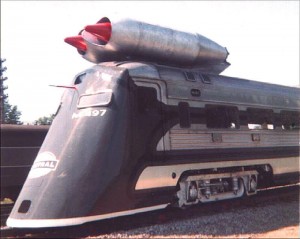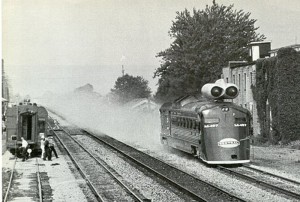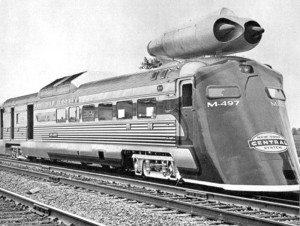Historic Video: The Budd Company’s Diesel Rail Car!


 Click on each image for a closer look!
Click on each image for a closer look!
.
From the 1930s until 1987 the Budd Company was a leading manufacturer of stainless steel streamlined passenger cars for a number of railroads including the CPR. In 1953 the CPR placed an order for 155 of these cars. Their famed “Canadian” passenger train set continues to be operated today by VIA Rail Canada.
.
In the waning years of passenger rail services by the major railways in North America, the Budd Company turned to building what were known as Budd Diesel Rail Cars in an effort to provide the railways with a more cost effective means of providing passenger service on routes with low passenger volumes.
.
Wikipedia has an excellent article on these cars which begins as follows:
.
“….. The Budd Rail Diesel Car or RDC is a self-propelled diesel-hydraulic multiple unit railcar. In the period 1949–62, 398 RDCs were built by the Budd Company of Philadelphia, Pennsylvania, United States. The cars were primarily adopted for passenger service in rural areas with low traffic density or in short-haul commuter service, and were less expensive to operate in this context than a traditional locomotive-drawn train. The cars could be used singly or several coupled together in train sets and controlled from the cab of the front unit.
.
The RDC was one of the few versions of the DMU-type train diesel multiple unit to achieve commercial success in North America. The basic car was adapted from a standard 85 ft (25.91 m) coach. They were powered by two Detroit Diesel (then a division of General Motors) Series 110 diesel engines, each of which drives an axle through a hydraulic torque converter, a technology adapted from military tanks of World War II. RDC trains were an early example of self-contained diesel multiple units, an arrangement now in common use by railways all over the world. …..”
.
As shown in the pictures above, one of these RDC engines, re-equipped with jet engines, achieved some fame by setting a speed record of 183.85 miles per hour, a U.S. rail-speed record that stands to this day. This experimental unit was built in an effort to promote government investment in high-speed passenger service. More pictures can be found here and an article here.
.
Both the CNR and the CPR used many of these RDC’s in the waning years of their providing passenger train service as noted in the Wikipedia RDC roster list. Many of these railcars remain in revenue and tourist line service throughout North America. Locally, Destiny Tours provides tourist train service using refurbished RDC’s (with diesel engines removed) on their Guelph Junction Express. In the spring of 2010, the Canadian Government and VIA Rail Canada announced here that they were contracting with Industrial Rail Services of Moncton, New Brunswick to rebuild and upgrade six of these cars for use on Victoria Island in B.C. and in Northern Ontario.
.
Click on the video below to view an interesting promotional video called “Clear Iron” produced in 1952 by the Budd Company promoting the Budd Railcars as a great advance for passenger travel.
.
Posting by Russ Milland
.
http://www.trha.ca

